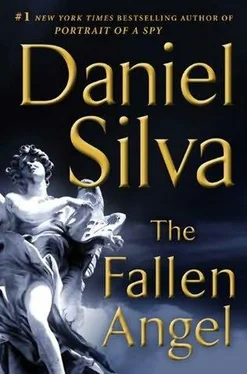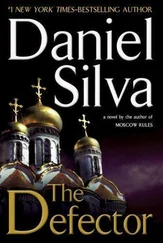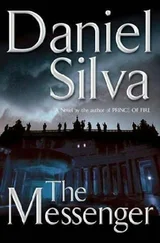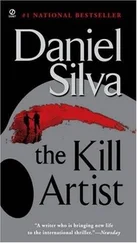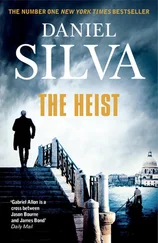He could go places I couldn’t go and talk to people who couldn’t come within a mile of me. . . . He was my own private Federal Express. . . .
It was this gnawing concern that compelled Dina to ask Unit 8200 to urgently subject all the electronic intelligence related to David Girard to steganographic analysis—steganography being the practice of hiding important coded messages inside a seemingly harmless vessel. Its use pre-dated even Saladin. The word “steganography” was Greek in origin, and the first uses of “concealed writing” dated to the fifth century BC, when Demartus, king of Sparta, hid his secret correspondence beneath a layer of beeswax. In the digital age, secret messages could be transmitted instantly over the Internet disguised as something entirely harmless. Casing photos for a terrorist attack could be hidden within pictures of girls in swimsuits; a message to an active terror cell inside a recipe for boeuf bourguignon . Decoding was a simple process that involved removing the proper number of bits from the color component of the cloaking image. Press a few buttons on a computer keyboard and the pretty girls became pictures of government buildings or subway platforms in New York City.
After 9/11, Israeli high-tech firms had been at the forefront of developing sophisticated software capable of quickly searching massive amounts of data for steganographic material. As a result, it took the Unit only a few hours to find two intriguing images that had been sent to the same Gmail address on the very same day. The first, hidden inside an apparently harmless photo of an Egyptian bronze cat, showed David Girard standing before a pair of ancient pillars in a darkened chamber, an imam at his side. The second image, hidden inside a snapshot of his wife, was a photograph of a trapezoid drawn freehand on a yellow legal pad. The trapezoid was empty except for a single small circle in the lower third. Next to the circle was a three-digit number: 689.
The trapezoid bore a vague resemblance to the outer boundaries of the Temple Mount plateau, which made the three-digit number all the more interesting; 689 was the year ‘Abd al-Malik, the fifth Umayyad caliph, had begun construction of the Dome of the Rock. Dina ran through several possible scenarios involving the number, but none made any sense to her. Then she placed the two images side by side and posed a simple question. What if the number had nothing to do with history and everything to do with location—specifically, the altitude of the chamber where Girard was standing? The Temple Mount plateau stood 2,428 feet above sea level, or 740 meters. Six hundred eighty-nine meters would therefore be 51 meters, or 167 feet, beneath the Temple Mount.
Now, alone in the team’s subterranean lair, she stared at the secret photograph of David Girard standing in his. And at the faces of the four Hezbollah terrorists who had been killed in Vienna. And at Massoud Rahimi riding a streetcar in Zurich. And at the text of the priority message that had gone out the previous evening to all Iranian intelligence stations and bases. Then, finally, she stared at the team’s battered television, where a small man in white was making his way slowly down the Via Dolorosa toward the church that Saladin had referred to as “the Dungheap.”
Blood never sleeps. . . .
And then she understood. She couldn’t prove any of it, just as she couldn’t prove that the man on the streetcar had been Massoud, but she knew it. And so she snatched up the receiver of her phone and dialed the extension for Uzi Navot’s office. Orit, his unhelpful executive secretary, answered after the first ring. Inside King Saul Boulevard, she was known as “the Iron Dome” because of her unrivaled ability to shoot down requests for a moment with the chief.
“Not possible,” she said. “He’s completely swamped.”
“It’s urgent, Orit. I wouldn’t be calling if it wasn’t.”
Navot’s secretary knew better than to ask what it was about. “I can give you two minutes,” she said.
“That’s all I need.”
“Get up here. I’ll squeeze you in as soon as I can.”
“Actually, I need him to come to me.”
“You’re pushing it, Dina.”
“Tell him if he wants there to be an Israel next week, he’ll drop everything and get down here right away.”
Dina hung up the phone and stared at the television. The pope had just arrived at the sixth station of the cross, the spot where Veronica wiped the face of Jesus.
“We adore thee, O Christ, and we praise thee.”
Blood never sleeps. . . .
“ARE YOU JOKING, DINA?”
With her expression, she made clear she wasn’t.
“Walk me through it,” Navot said.
“There isn’t time.”
“Make time.”
She pointed to a photo of the ruined Galleria Naxos in St. Moritz.
“What about it?”
“According to Massoud, David Girard knew that Gabriel was investigating the murder of Claudia Andreatti at the Vatican and that Gabriel had gotten too close to Carlo Marchese.”
“Go on.”
“Why was Girard still in Europe? Why didn’t he pull up stakes and head back to Hezbollah Land?”
“Because they wanted to leave him there as bait for Gabriel.”
“Correct. But why ?”
“Because they wanted to kill him for blowing up their centrifuges.”
“It’s possible, Uzi. But I don’t think so. I think they wanted Gabriel to come to St. Moritz for another reason.”
“What’s that?”
“Taqiyya.” Dina pointed to another photo—the Iranian assassin named Ali Montezari and the El Greco girl who served as his accomplice. “They gave the job to someone we would recognize. They wanted us to know they were behind it.”
“Why?”
“Because they also wanted us to find this.” She was pointing to another photo—Massoud and Girard, side by side on a Zurich streetcar. “I checked the weather in Zurich on the day this picture was taken. The sun was shining, but it was bitterly cold.”
“Why is the weather important?”
“Because Massoud isn’t wearing gloves.” She pointed to the bandage on the back of his right hand. “He wasn’t wearing gloves because he wanted us to see it.” She paused, then whispered, “He wanted me to see it.”
“You’re saying Massoud wanted us to know he was linked to David Girard and the bombing of the gallery?”
“Exactly.”
“Why?”
“Taqiyya,” she said again.
Navot’s expression had lost any trace of skepticism. “Keep going.”
“The Iranians dangled Massoud in front of us and left us no choice but to bite by bombarding us with chatter about a coming terrorist attack and putting Hezbollah’s forces on the move in southern Lebanon. It was a classic feint. And it had but one purpose. Taqiyya .”
“Displaying one intention while harboring another.”
Dina nodded.
“But the cell in Vienna was real.”
“True. But it was never going to be allowed to carry out its assignment. Massoud always planned to reveal its existence to us in dramatic fashion, leaving just enough time for us to act.”
“You’re saying the cell was taqiyya ?”
She nodded. “It was like General Patton’s ghost army during the Second World War, the one the Allies put in East Anglia to make the Germans think the invasion of France would come at Calais instead of Normandy. The British and American deception officers filled the airwaves with false signals because they knew the Germans were listening. Even after the first troops landed on the beaches, the German army was paralyzed by indecision because they believed the decisive battle of the war would be fought at Calais.”
Читать дальше
Конец ознакомительного отрывка
Купить книгу
